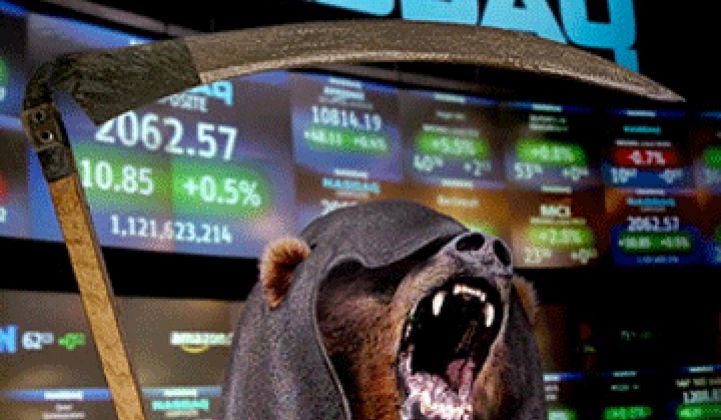Why does a firm like Suntech with annual revenue of $3.2 billion have a market cap of $306.25 million?
Why has First Solar's market cap dropped to $5 billion from more than $10 billion just months ago? First Solar's stock, trading at $57.90 and down 8.4 percent, has not seen its stock price that low since April 2007.
Yesterday, October 3, Suntech's stock dropped 26.41 percent to $1.70, an historic low. What is the market reacting to?
Suntech is the world's largest producer of solar panels. As of last quarter's earnings report, the China-based firm was on track to meet its full year guidance of 2.2 gigawatts. Total net revenues were $830.7 million in the second quarter of 2011. Revenue guidance for full year 2011 was dialed down $100 million to a range of $3.2 billion to $3.4 billion. Gross margins were a slim 4.1 percent in the second quarter of 2011. The firm's ASP declined 7 percent quarter-to-quarter and Suntech expects mid- to high-teen price declines in Q3.
But Suntech actually got some positive news this month. Sempra Generation's massive 700-megawatt Mesquite Solar project has Suntech as the panel supplier for the initial 200-megawatt (DC) phase of the build and the project just received a DOE loan guarantee. When completed in 2013, Mesquite Solar I will be one of the largest photovoltaic solar installations in North America.
First Solar also saw billions in loan guarantees come through in several large solar projects.

Chart from Google Finance
All solar stocks were in the red yesterday, with Hanwha Solar's stock down 22.41 percent. Yingli, Trina, and First Solar had losses in the 7 percent to 8 percent range, the least scathed in the downward trend. The Dow Jones Industrial Average was only down 2.3 percent.
Chinese internet stocks have tumbled on news of an SEC audit of accounting practices. Trina has had some audit committee excitement of late. (See John Hempton's blog for his take on that situation.)
SunPower's shares fell to 52-week lows on news that the company would be revising its forecasts downward due to "challenging market conditions."
Polysilicon prices are approaching $40 per kilogram.
Third-quarter earnings in the solar sector look to show continued agony for the profits and margins of the major players.
Is there an upside to this bloody market? Absolutely.
Solar panel vendors will learn to live with lower margins or, alternatively, perish. ASPs will continue to fall. And the solar market will once again exhibit its historic price elasticity and as panel prices drop, the market will continue to grow, and the price of power generated by photovoltaics will fall.



